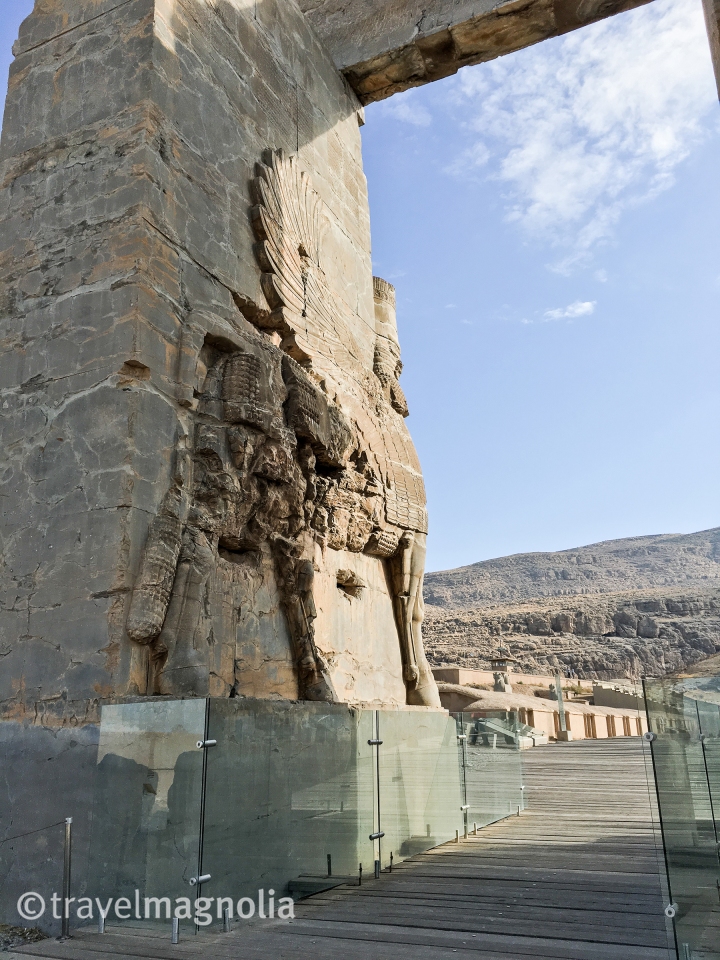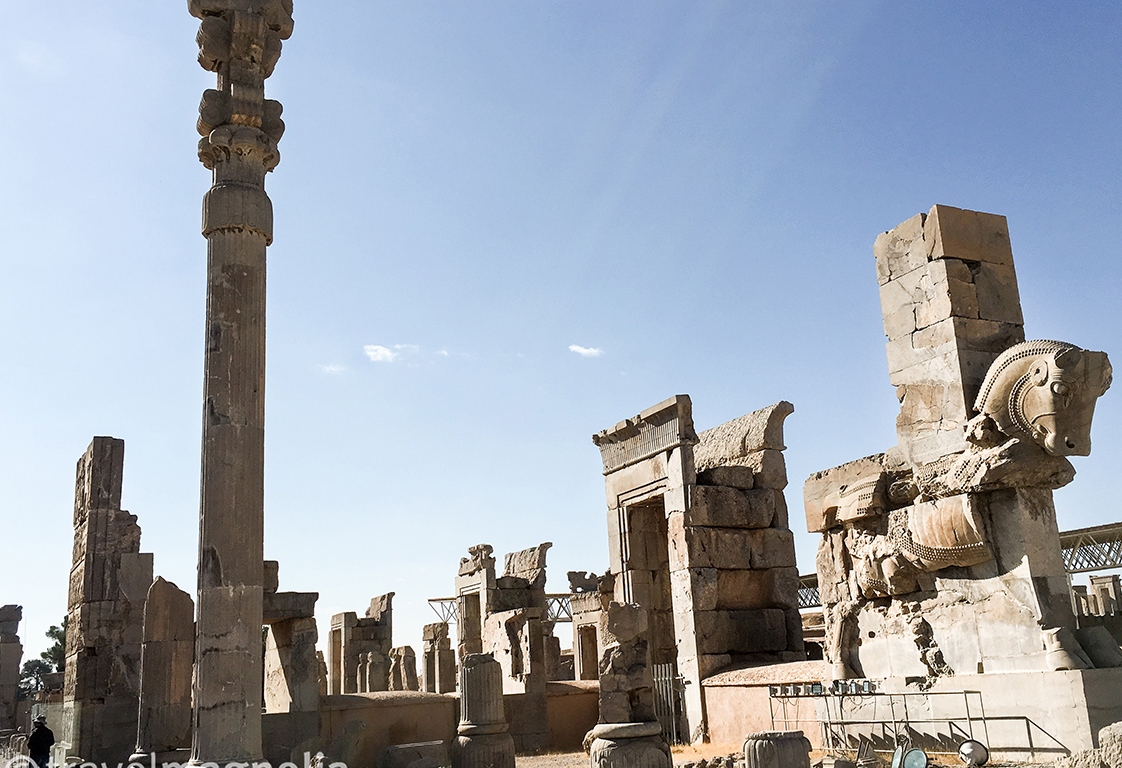Few places exceed my expectations as did Iran overall and Persepolis specifically. I never took Ancient History and don’t know mythology well. Even so, I fell under the spell of this remarkable place. Persepolis, known to Iranians as Takht-e Jamshid (throne of Jamshid – a mythic being who – in the middle ages – was thought to have built it) was the ceremonial capital of the Achaemenid Empire for a little over two centuries (ca. 550–330 BCE). Conceived by and with construction commenced under Darius the Great and destroyed by Alexander the Great (the historian Plutarch contended that it took 20,000 mules and 5,000 camels to remove the treasure), the city’s ruins are marvelous to behold. UNESCO designated it as a World Heritage Site in 1979. Persepolis is easy to reach from Shiraz and warrants an entire day to absorb its wonders.  We arrived at 8 a.m. and were rewarded by having the site virtually to ourselves for the first hour.
We arrived at 8 a.m. and were rewarded by having the site virtually to ourselves for the first hour.
 While Darius I ruled over the initial period of development, much of Persepolis was constructed after his death under the aegis of his son and heir Xerxes, including the Gate of All Nations (486-465 BCE). The two guardian figures are Lamassu, winged-bulls with the head of a man.
While Darius I ruled over the initial period of development, much of Persepolis was constructed after his death under the aegis of his son and heir Xerxes, including the Gate of All Nations (486-465 BCE). The two guardian figures are Lamassu, winged-bulls with the head of a man.
 I can’t even begin to do justice to the history and archaeology. I hope these photos will inspire you to visit and see for yourself.
I can’t even begin to do justice to the history and archaeology. I hope these photos will inspire you to visit and see for yourself.



One of the most remarkable sights is the extensive carvings along the monumental stairways that led to the Apadana. Representatives from the Achaemenian Empire’s subject nations are shown bearing tribute to the King as part of the annual New Year’s festival.

There are hundreds of different figures that can all be identified by their clothing, their features and their gifts. The attention to detail is extraordinary: look at the horse’s mane and tail, the gryphons on the vase handles, the earring of the man in the lead (who is holding hands with the man ahead).

Darius’s Palace (above) suffered less destruction than that of Xerxes (below), which some attribute to Alexander’s desire for revenge for the burning of the Acropolis.

Everywhere you walk, there are exquisite carvings that provide insight into the ancient world..

I think it is only right to end with the column below and its remarkable depiction of either Darius or Xerxes.

I heartily recommend reading and researching in advance to learn some of the history and mythology behind the inscriptions and bas reliefs. There is a wealth of easily accessible information on Persepolis and the bookstore near the entrance sells guidebooks.
On to Naqsh e Rostam next and then to Isfahan!


Maggie, I am in awe of your research, knowledge and travel to amazing places in the world! Thank you for sharing….
LikeLiked by 2 people
Thanks Rosa! It’s my pleasure 😉
LikeLike
Great photos 🙂
LikeLiked by 1 person
Thank you!
LikeLike
I think you will be qualified to be a history teacher if you ever tire of being a travel blogger. But don’t quit travel blogging too soon. I enjoy living vicariously through you.
LikeLiked by 1 person
Thanks Sue! I think the travel bug will keep me blogging for years to come!
LikeLike
More beautiful photos from Iran! Thanks for sharing them… I’m seriously considering a visit at this point!
LikeLiked by 1 person
I second Sue’s comment!! I love learning so much history – takes me back to Art History class!
LikeLiked by 1 person
What great photos. My family and I traveled to Shiraz a couple of years before moving to the US. It was an amazing trip and I remember it well. What I also remember, is the whispered criticism of the 2500th celebration of the Persian empire at Persepolis in 1971. I remember my family pronouncing that everything came from Paris, as if Iranians don’t have the proper ingredients, skills, and fashion sense to organize a party 🙂 I think Shah’s downfall started there!
I have not returned to Shiraz since I was 10 or 11 years old. But I will during my next trip to Iran; I expect there will be much less pollution than in Tehran.
I really enjoy reading your posts. I also thank Susan Huser for forwarding your blog.
LikeLike